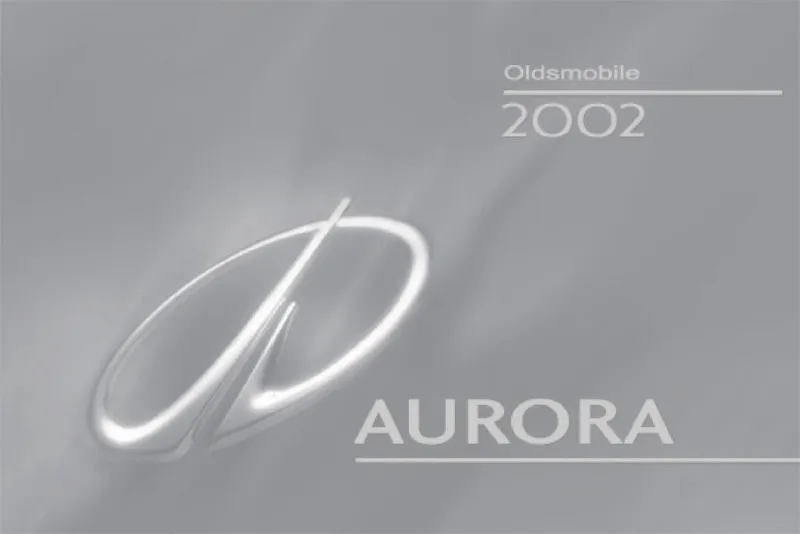2002 Oldsmobile Aurora Owner's Manual

Table of Contents
2002 Oldsmobile Aurora Overview
Introduction
The 2002 Oldsmobile Aurora stands as a testament to American luxury sedans of the early 2000s, blending performance, comfort, and timeless design. Known for its refined aesthetics and impressive engineering, the Aurora made a bold statement in the automotive world, featuring a sleek silhouette and upscale interior components. This model not only honored Oldsmobile's rich heritage but also promised a driving experience that catered to both enthusiasts and those seeking sophistication.
Powertrains
Under the hood, the 2002 Oldsmobile Aurora offered two compelling powertrains that emphasized its performance credentials. The base model was equipped with a smooth and efficient 4.0-liter V8 engine, generating 250 horsepower, providing ample power while ensuring a refined driving experience. For those desiring more muscle, an optional 4.6-liter Northstar V8 engine was available, cranking out an exhilarating 300 horsepower, delivering impressive acceleration and a sporty ride. Both engines were paired with a 4-speed automatic transmission that offered smooth shifts and optimal fuel efficiency.
Trims
The 2002 Aurora came in two distinct trims: the base and the upscale 'Aurora 4.0'. Both trims boasted a luxurious cabin, but the Aurora 4.0 featured additional enhancements like leather upholstery, upgraded sound systems, and a host of more advanced technology options. Each trim allowed owners to tailor their vehicle experience to their preferences, making it appealing to a broad spectrum of drivers.
Features
Inside the 2002 Aurora, occupants were greeted with an array of premium features designed for comfort and convenience. Highlights included dual-zone climate control, power-adjustable front seats, and a robust audio system. The vehicle also incorporated safety features like traction control, anti-lock brakes, and multiple airbags, ensuring peace of mind during every journey. Additionally, available navigation systems and premium sound options set a high standard for the era.
Owner's Manual
The owner's manual for the 2002 Oldsmobile Aurora provides essential information regarding vehicle maintenance, troubleshooting, and understanding the extensive features of this luxury sedan. With step-by-step instructions, the manual ensures that owners can fully utilize every aspect of their vehicle, enhancing both performance and longevity. It stands as a vital resource for aspiring Aurora enthusiasts, guiding them in getting the most out of their prized possession.
User manual download
The Oldsmobile Aurora owner manual for the 2002 model year is to be found in PDF downloadable format on this page. The owner manual for the model year 2002 is free and in English, but the repair manuals are usually not easy to get and may cost more.
Manual Questions
Fill the form below and someone will help you!
